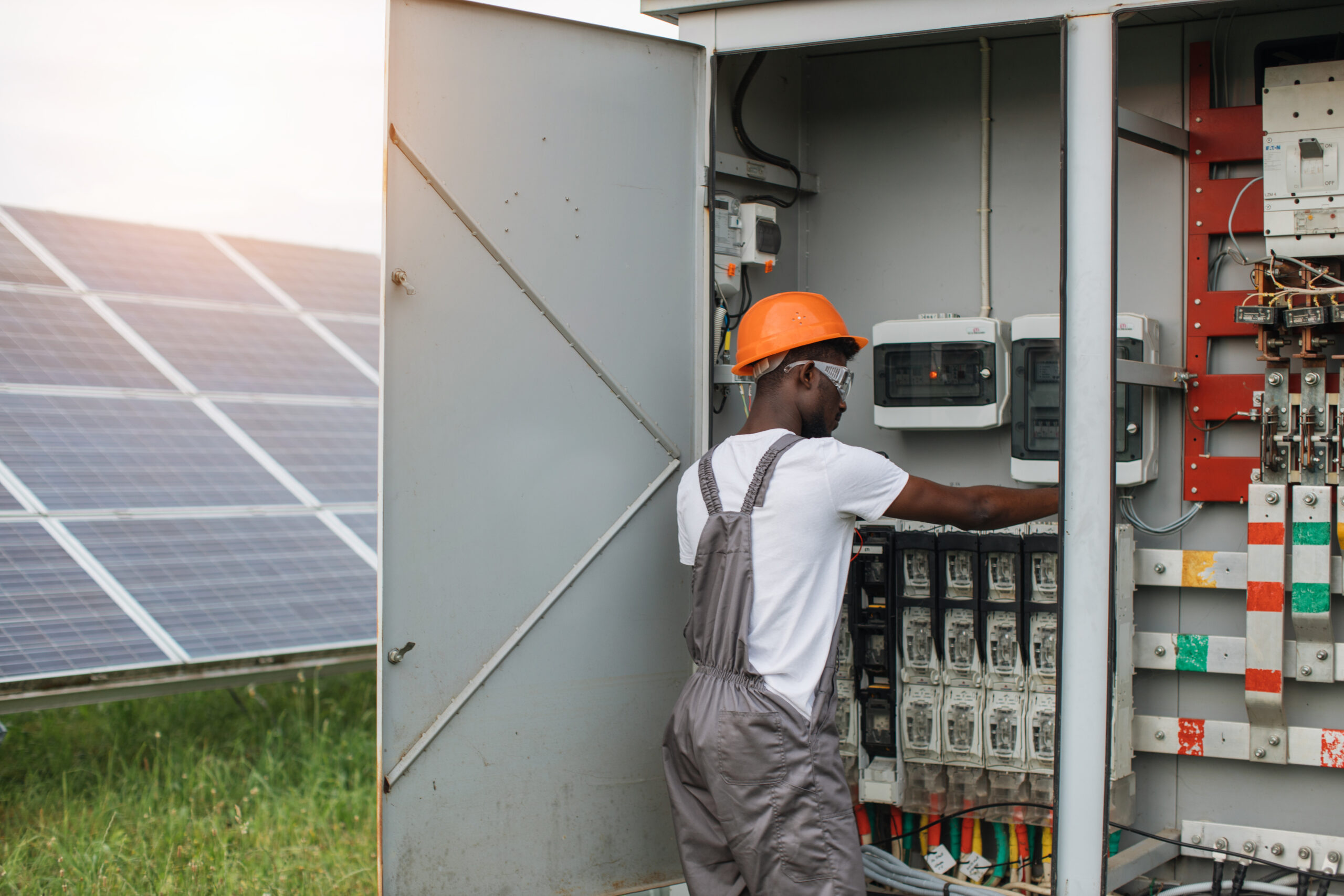As electricity costs continue to rise, net metering offers a viable solution for reducing expenses while promoting clean energy generation. Homeowners can offset their electricity bills by producing renewable energy and feeding excess power back into the grid, contributing to a greener future. In this article, we will explore the advantages of net metering, shedding light on how Ontario homeowners can take advantage of this program. Let’s delve into the details and uncover the potential of net metering!
The Independent Electricity System Operator (IESO) administers the net metering program in Ontario. Here’s a breakdown of how it works:
- Installation: To participate in net metering, you must install a renewable energy system on your property, such as solar panels, wind turbines, or micro-hydro systems. These systems generate electricity that can be used to power your home.
- Bi-Directional Meter: A bi-directional meter measures the electricity flowing in both directions—from the grid to your home and from your renewable energy system to the grid.
- Consumption and Generation: When your renewable energy system generates more electricity than you consume, the excess power is sent back to the grid, and you receive credits for it.
- Billing and Credits: Your electricity bill will reflect the net amount you consume from the grid after accounting for the credits earned from the excess electricity you generate. If you generate more electricity than you consume over a billing period, those credits can be carried forward to future bills.
- Eligibility and Connection: To participate in net metering, you must meet specific eligibility criteria and follow the connection process outlined by your local distribution company (LDC). They will guide you through the application, inspection, and connection process.
Understanding Net Metering
Net metering allows homeowners with solar panels or other renewable energy systems to receive credit for the excess electricity they generate. When your solar panels produce more electricity than you consume, the surplus power is returned to the grid. In return, you receive credits on your electricity bill, effectively offsetting the costs of the electricity you consume during times when your solar panels are not generating enough power.
What Advantages Does Net Metering Offer?
- Energy Savings: Net metering allows homeowners to reduce their electricity bills by generating their power, feeding any excess back into the grid, and helping them save money on their electricity bills.
- By generating their electricity, they rely less on the grid, which means they can save money in the long run.
- Environmental Benefits: By generating clean, renewable energy through net metering, you’re reducing your carbon footprint and helping to combat climate change. Solar panels, for example, produce electricity without emitting greenhouse gases, making them an environmentally friendly choice.
- Incentives and Rebates: Many regions, including Ontario, offer incentives and rebates to homeowners who participate in net metering programs. These financial incentives offset the initial costs of installing renewable energy systems and make the transition to clean energy more affordable.
- Increased Home Value: Installing a renewable energy system and participating in net metering can increase the value of your home. Many homebuyers are attracted to properties with solar panels or other renewable energy systems, as they offer long-term energy savings and environmental benefits.
- Job Creation: The growth of the renewable energy sector, driven in part by net metering programs, creates job opportunities in various fields, such as installation, maintenance, and manufacturing of renewable energy systems. Net metering contributes to the development of a sustainable and green economy.
- Grid Resilience: Net metering helps enhance the stability and resilience of the electrical grid. By decentralizing energy generation and incorporating distributed renewable energy systems, the grid becomes more robust and less susceptible to disruptions.
Overview of the Net Metering Scheme in Ontario
Ontario’s net metering program has a fascinating history. It was first introduced in 2005 to encourage renewable energy generation and empower individuals and businesses to become more sustainable. Over the years, the program has evolved and undergone updates to make it more accessible and beneficial for participants.
Specific policies and regulations govern Ontario’s net metering scheme. These guidelines outline the eligibility criteria for participants, the technical requirements for renewable energy systems, and the compensation mechanisms for excess energy generation. The Ontario Energy Board (OEB) regulates and oversees the program to ensure fairness and transparency.
Various key players and stakeholders are involved in Ontario’s net metering scheme. The Ontario Energy Board (OEB) sets the rules and regulations. Local distribution companies (LDCs) play a vital role in managing the distribution grid and facilitating the connection of renewable energy systems. Renewable energy system installers are the experts who help individuals and businesses install and set up their systems.
And, of course, the participants themselves are the ones who generate renewable energy and benefit from the program.
Ontario’s net metering scheme contributes to a greener and more sustainable future by promoting renewable energy generation and empowering individuals and businesses.
Conditions and Requirements for Homeowners
To be eligible for Ontario’s net metering program, homeowners must meet specific criteria. Generally, homeowners must install a renewable energy system on their property, such as solar panels. They must also contract electricity distribution with their local distribution company (LDC). Additionally, there may be specific requirements related to the size of the system, the type of renewable energy technology used, and the maximum capacity allowed for net metering.
Homeowners must ensure that their renewable energy system meets the technical specifications and installation guidelines set by the Ontario Energy Board (OEB). These guidelines cover aspects such as the type and quality of equipment, electrical safety standards, and grid interconnection requirements. Working with a qualified installer is essential to ensure the system is installed correctly and meets all the necessary technical specifications.
The interconnection process refers to the steps involved in connecting the renewable energy system to the grid. Homeowners need to follow the interconnection process outlined by their local distribution company (LDC). This typically involves submitting an application, providing necessary documentation, and coordinating with the LDC for system inspection and approval. The LDC will assess the system’s compliance with safety and technical requirements before granting permission for grid interconnection.
By meeting the eligibility criteria, adhering to the technical specifications, and following the interconnection process, homeowners can participate in Ontario’s net metering scheme and enjoy the benefits of renewable energy generation.
Challenges and Considerations
While net metering offers many benefits, there are some potential drawbacks to be aware of. One challenge is the upfront cost of installing a renewable energy system, such as solar panels. It can be a significant investment, although financing options are available to help homeowners manage the cost. Another consideration is the variability of renewable energy generation. Weather conditions can affect the amount of energy produced, which may impact the overall savings and benefits of net metering.
Common concerns related to net metering include grid reliability and the impact on non-participating customers. Critics argue that the influx of renewable energy from net metering participants could strain the grid or increase costs for non-participating customers. However, studies have shown that when properly implemented, net metering can have minimal impact on grid reliability and can actually benefit the overall electricity system.
Considering these challenges and addressing common concerns is essential to implement net metering programs successfully. By understanding the potential drawbacks and finding solutions to address problems, we can continue to promote renewable energy generation and its benefits.
Before embracing net metering, it is paramount to ensure your home’s energy efficiency. This involves improving insulation, using energy-efficient appliances, and cultivating energy-saving habits. By curbing overall energy consumption, you can amplify the impact of renewable energy generation and bolster your savings.
Collaborating with a certified installer is crucial to appropriately sizing your renewable energy system to meet your energy requirements. An undersized system may not generate sufficient energy, while an oversized one might lead to energy wastage. Striking the right balance is key to optimizing net metering benefits.
Regularly monitoring your renewable energy system’s performance is essential for optimal operation. Track energy production, watch for anomalies or malfunctions, and adhere to routine maintenance per the manufacturer’s recommendations. This proactive approach ensures efficiency and longevity.
Beyond net metering, explore other potential incentives or programs that can augment the advantages of renewable energy generation. Investigate local, provincial, or federal initiatives offering financial incentives, grants, or tax credits for renewable energy systems. Leveraging these opportunities can amplify the financial rewards of your net metering participation.




